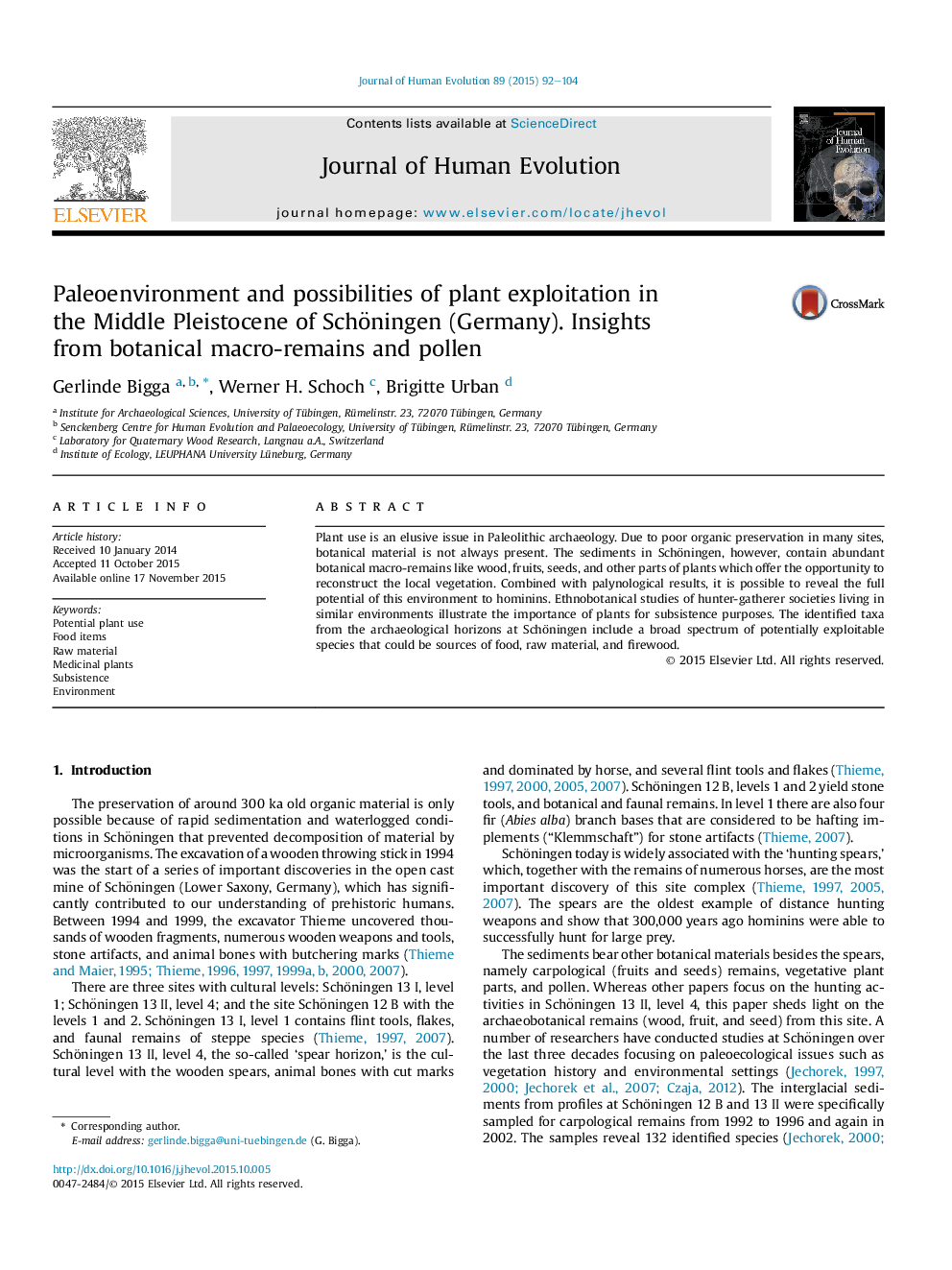| Article ID | Journal | Published Year | Pages | File Type |
|---|---|---|---|---|
| 4555905 | Journal of Human Evolution | 2015 | 13 Pages |
Plant use is an elusive issue in Paleolithic archaeology. Due to poor organic preservation in many sites, botanical material is not always present. The sediments in Schöningen, however, contain abundant botanical macro-remains like wood, fruits, seeds, and other parts of plants which offer the opportunity to reconstruct the local vegetation. Combined with palynological results, it is possible to reveal the full potential of this environment to hominins. Ethnobotanical studies of hunter-gatherer societies living in similar environments illustrate the importance of plants for subsistence purposes. The identified taxa from the archaeological horizons at Schöningen include a broad spectrum of potentially exploitable species that could be sources of food, raw material, and firewood.
